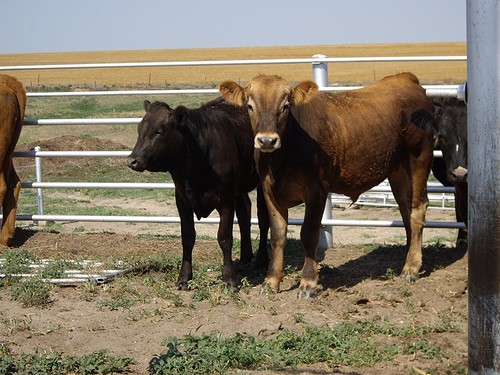June 21, 2009

We’ve previously highlighted that drug-resistant bacteria are fairly common in food animals on farms. One explanation for why we might find resistant bacteria in these food animals is that animal farming operations frequently use antibiotics to keep animals from getting sick in their crowded, often dirty quarters; this may encourage the local emergence of drug resistance as a result of antibiotic selection pressure. Even though this explanation is intuitive, there is little direct evidence to support the theory. It might be the case that the resistant bacteria found among farm animals are somehow introduced from outside sources through contact with people or other animals.
A recent study in the journal Clinical Infectious Diseases assessed the similarities between resistant and sensitive E. coli strains among similar food animals. E. coli is a frequent cause of disease in humans, and antibiotic resistant strains often colonize the human gut after people consume food containing resistant strains. The authors of the study examined whether resistant strains were similar to sensitive strains among the same animals or whether they appeared to be substantially different strains that were likely introduced from elsewhere. They found that resistant strains were very similar to sensitive strains from the same animals, strongly suggesting that the resistant strains developed locally. Furthermore, many of the strains of E. coli collected from the animals were found to have virulence factors that could cause human disease. The resistant E. coli strains could also contribute to resistance in other organisms through the transfer of resistance genes to other bacteria.
What this means: antibiotic-resistant bacteria on farms are very likely a product of local selection pressures, particularly antibiotic use on farms. Resistant bacteria among food animals are likely a substantial source of the resistant bacteria that cause disease in humans, either through infection caused by these bacteria or from the transfer of resistance genes from these bacteria to other pathogenic bacteria.
Image Credit: Flickr: C. K. Hartman











